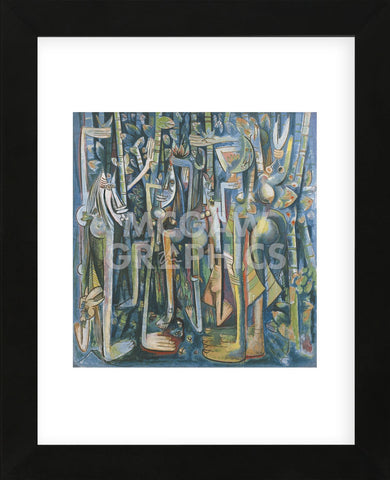Product Detail
- Overall: 16" H x 13" W x 0.75" D
- Overall Product Weight: 2.5lb.
- Material: Glass
- High-quality print on heavy paper
- Printed with vibrant, color-fast inks
- Framed in a contemporary style molding; available in black, gold, and white
- Sawtooth hanger
- Unmatted
© Wifredo Lam
Product Detail
- Overall: 16" H x 13" W x 0.75" D
- Overall Product Weight: 2.5lb.
- Material: Glass
- High quality print on heavy paper
- Printed with vibrant, color-fast inks
- Framed in a contemporary style molding; available in black, white, and gold
- Sawtooth hanger
- Unmatted
About the Artist
Wifredo Lam (b Sagua la Grande, 8 Dec 1902; d Paris, 11 Sept 1982) was a Cuban painter, draughtsman and sculptor. He was brought up as a Roman Catholic but was also introduced at an early age to African superstitions and witchcraft. In 1916 he moved to Havana, where he began to make studies of the tropical plants in the Botanical Gardens while studying law at the insistence of his family. He studied painting at the Escuela de Bellas Artes from 1918 to 1923 but disliked the academic teaching and preferred to paint out of doors, in the streets. He left for Spain in autumn 1923, remaining there until 1938. In the mornings he attended the studio of the reactionary painter Fernando Alvarez de Sotomayor, curator of the Prado, who was also the teacher of Salvador Dal?, but in the evenings he worked in the studio where the young non-conformist painters gathered. He was fascinated by the paintings of Hieronymus Bosch and Pieter Bruegel I in the Prado and by the Museo Arqueol?gico Nacional; it was during this period that he also became aware of the work of Paul C?zanne and Paul Gauguin. His early pictures were in the modern Spanish realist tradition (e.g. Landscape of Las Ventas, 1926-7; Buenos Aires, priv. col., see Fouchet, 1984, p. 20), but they gradually became much more simplified and decorative.





